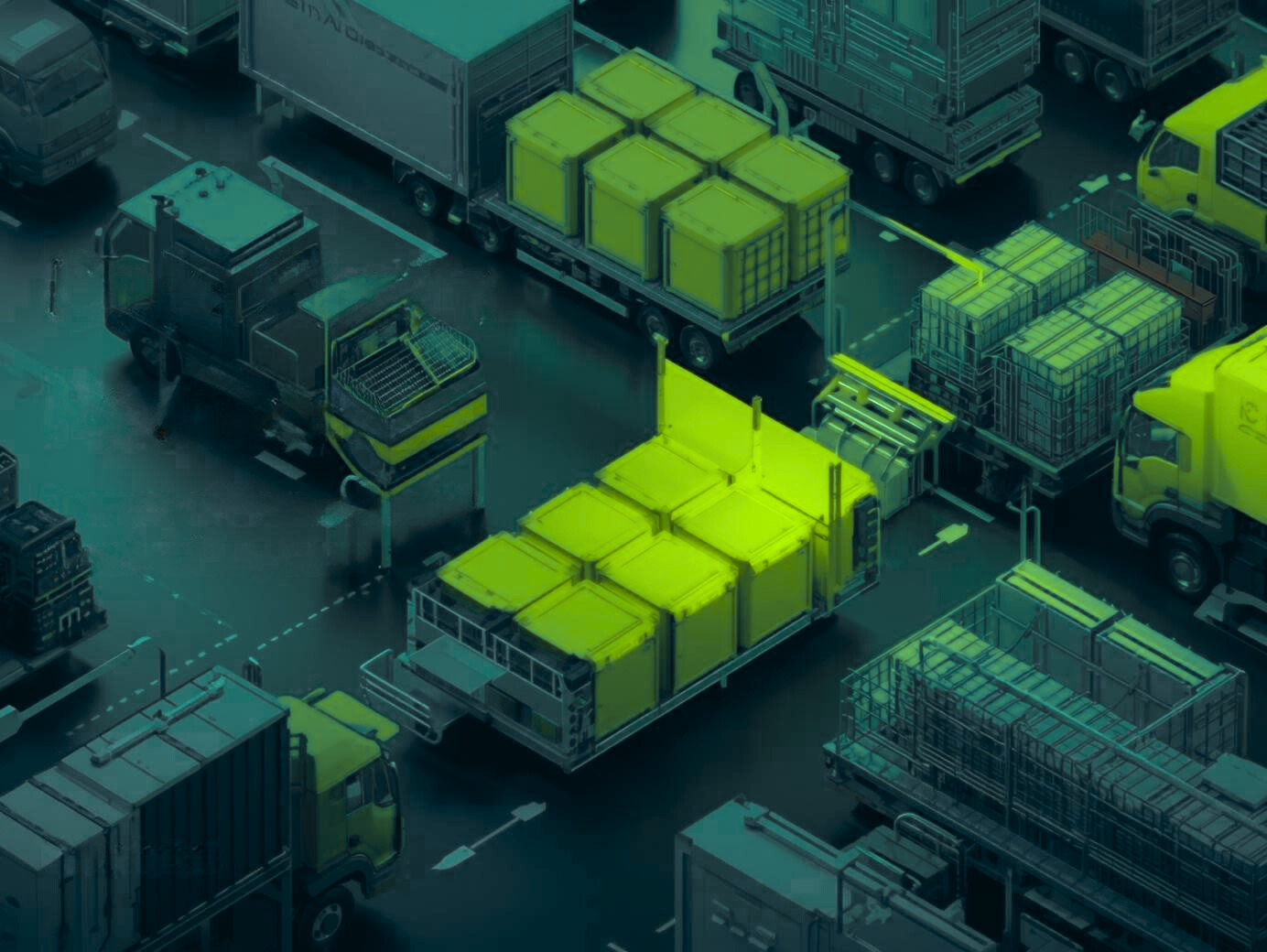Cold Chain Resilience: Lessons from Recent Supply Chain Disruptions

When the temperature drops, so does the margin for error.
From record-breaking storms to labor strikes and port congestion, recent years have tested every link in the cold chain. For shippers and carriers alike, resilience is no longer just a buzzword, it’s a survival skill.
The question isn’t whether your supply chain will be disrupted again. It’s how prepared you’ll be when it happens.
The Cold Chain Under Pressure
In the past few years, the cold chain has faced an onslaught of challenges:
• Extreme weather events freezing lanes or flooding entire regions.
• Port congestion creating bottlenecks and costly delays.
• Labor shortages at warehouses, ports, and on the road.
• Equipment constraints as reefer capacity and parts availability tightened.
• Fuel price volatility driving unpredictable costs.
Each of these alone can create ripple effects. Together, they’ve exposed one hard truth:
The modern cold chain is only as strong as its weakest point of visibility, communication, or flexibility.
But amid the chaos, some shippers and 3PLs didn’t just survive, they adapted, learned, and came out stronger. Their stories reveal what true cold chain resilience looks like.
Lesson 1: Visibility Isn’t a Luxury, It’s a Lifeline
When a storm shuts down a corridor or a reefer unit flags a temperature alert, real-time visibility isn’t a “nice-to-have.” It’s the difference between saving a shipment and losing it.
During the 2024 winter freeze that hit the Midwest, thousands of shipments sat stalled. The companies that minimized losses weren’t the biggest or best-funded — they were the ones that saw problems before they spiraled.
Resilient operators:
• Use IoT and telematics to monitor temperature, location, and reefer performance in real time.
• Integrate API-driven data feeds between carriers, shippers, and brokers to close communication gaps.
• Set up proactive alert systems so issues are flagged and rerouted before a load spoils.
Visibility isn’t just about data, it’s about control. When every mile and minute count, you can’t fix what you can’t see.
Lesson 2: Agility Starts with Relationships
Technology builds visibility. Relationships build flexibility.
When labor strikes or port slowdowns hit in 2023, shippers with strong carrier and 3PL partnerships adapted fastest. Instead of scrambling for backup options, they leaned on existing networks. Partners who already understood their freight profile, product sensitivities, and service standards.
The takeaway? Resilience isn’t built during a crisis, it’s built long before one.
Strong relationships mean:
• Faster access to alternative capacity when lanes tighten.
• Trust to make quick decisions on routing or consolidation.
• Collaborative problem-solving rather than transactional firefighting.
If your cold chain partners only know your loads, not your business, you’re one disruption away from a standstill.
Lesson 3: Redundancy Is the New Efficiency
For years, supply chain optimization meant trimming excess and tightening schedules. Lean operations ruled. But recent disruptions revealed the flaw in that logic: a chain without slack can’t absorb shocks.
The resilient shippers have learned to build intentional redundancy, not waste, but backup plans.
That can mean:
• Diversifying lanes, carriers, and facilities to avoid over-reliance on one region or partner.
• Using multi-modal options (FTL, LTL, intermodal) where appropriate.
• Holding strategic buffer inventory for temperature-sensitive SKUs.
• Establishing contingency routing plans before peak season.
Efficiency keeps costs low. Redundancy keeps freight moving. The best-run supply chains find the balance between both.
Lesson 4: Data-Driven Decisions Outperform Gut Reactions
In fast-moving disruptions, instincts can only go so far. The logistics leaders making smart, fast calls are those guided by data not panic.
When hurricane season hit the Gulf last year, one food distributor used lane-level analytics and weather mapping to predict which distribution centers were most at risk. Instead of waiting for delays, they proactively shifted freight to inland routes, keeping products in motion while competitors waited out the storm.
Data-driven resilience looks like:
• Using predictive analytics to forecast weather, lane congestion, and capacity fluctuations.
• Tracking reefer uptime, claims, and route performance to identify weak spots.
• Leveraging TMS platforms for dynamic rerouting when disruptions hit.
In the cold chain, data isn’t just information, it’s insurance.
Lesson 5: People Power the Process
Technology may be the backbone of resilience, but people are the muscle.
Behind every on-time delivery during a disruption is a driver who made the call to detour early, a dispatcher who saw a problem developing, or a customer service rep who communicated with clarity instead of chaos.
The most resilient cold chain operations are those where communication and accountability flow both ways.
How leading teams stay people-strong:
• Cross-train staff to handle multiple functions during disruptions.
• Empower drivers and dispatchers with the authority to make critical calls.
• Maintain open, honest communication with customers, even when the news isn’t good.
• Celebrate small wins that reinforce adaptability and trust.
When people feel supported and informed, they don’t freeze under pressure, they rise to it.
Lesson 6: Sustainability and Resilience Go Hand in Hand
At first glance, sustainability and resilience might seem like separate goals. But in the cold chain, they’re deeply connected.
Fuel-efficient routing, well-maintained reefers, and optimized backhauls not only reduce emissions they improve uptime and reliability. Solar-assisted reefers, battery-powered auxiliary units, and energy-efficient warehouses aren’t just good for the planet; they reduce operational risk.
In other words, a sustainable cold chain is often a more stable one.
The New Playbook for Cold Chain Resilience
Every disruption tells a story, and each one adds another chapter to the industry’s collective playbook.
If the last few years have taught us anything, it’s this: cold chain resilience is built on visibility, agility, redundancy, data, and people.
Here’s what that looks like in practice:
1. Invest in technology that gives you end-to-end visibility.
2. Strengthen relationships with carriers and 3PL partners who know your business.
3. Design flexibility into your network with alternative routes and capacity options.
4. Leverage analytics for proactive decision-making.
5. Empower your people. They’re your greatest asset when disruption strikes.
Resilience doesn’t mean avoiding disruption. It means absorbing it, adapting to it, and emerging stronger than before.
Strength Built in Motion
Cold chain logistics has never been easy. It demands precision, teamwork, and relentless problem-solving. But the disruptions of recent years have revealed something powerful, this industry’s ability to rise to the challenge.
When freight stops, the world feels it. From grocery shelves to hospital supplies, the cold chain doesn’t just keep goods moving; it keeps life moving.
That’s what makes logistics professionals the quiet heroes of modern commerce. The ones who ensure integrity, quality, and reliability even when the world freezes over.
At Service First Logistics, we believe resilience isn’t about reacting, it’s about being ready.
Our cold chain logistics experts help FTL shippers strengthen visibility, optimize routes, and plan for the unexpected. Whether it’s weather, capacity, or compliance, we build strategies that keep your freight, and your reputation, protected.
Because when disruption hits, you deserve a partner that doesn’t just move freight…
but keeps your cold chain moving forward.



